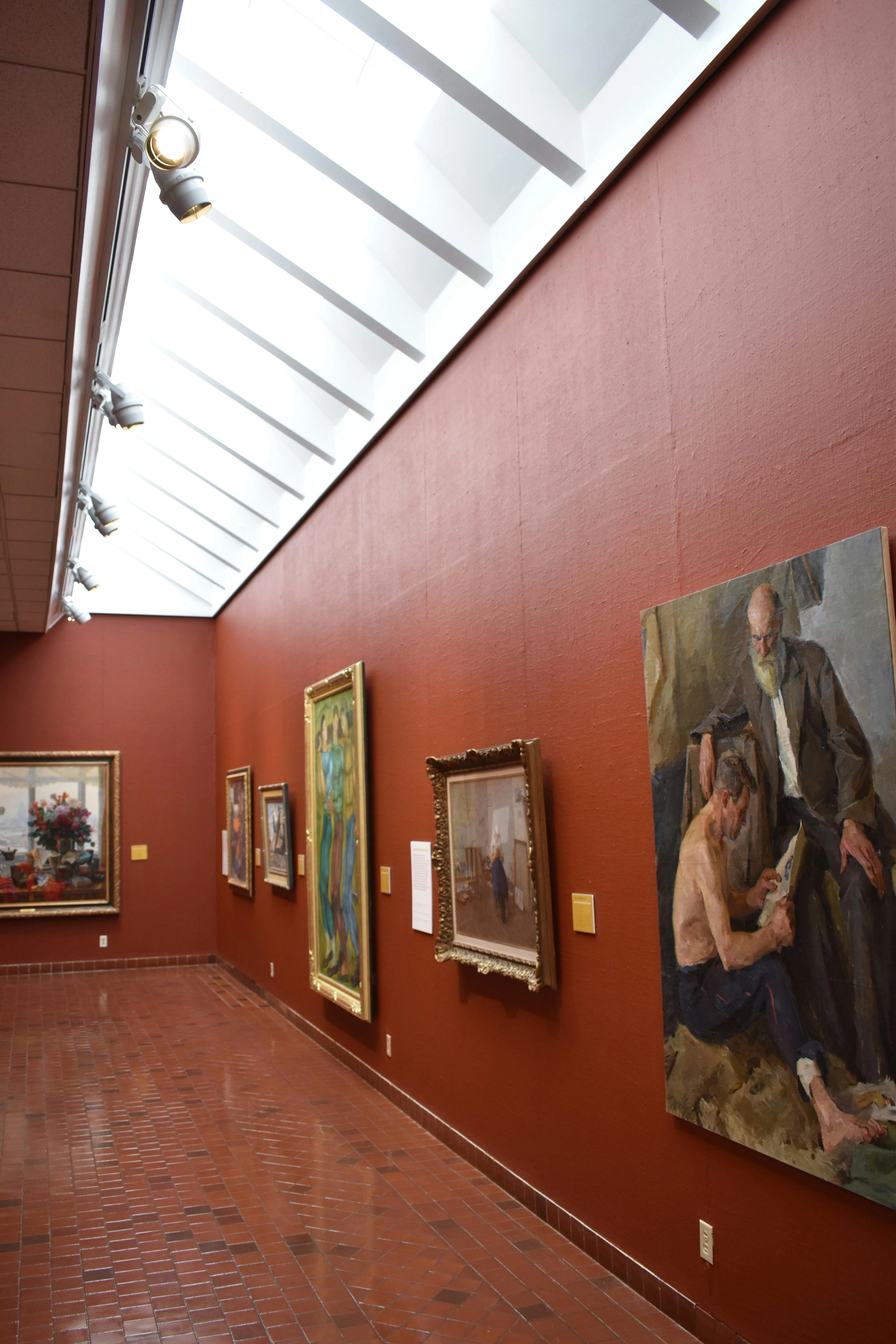
10+ Questions I Wish I Asked Before Buying My First Art Piece
Buying your first art piece? As an artist, I share the essential questions I'd ask myself and the seller about love, medium, condition, provenance, hidden costs, and more. Get my personal guide to making a joyful, informed purchase.
10+ Questions I Wish I'd Asked Before Buying My First Piece of Art
Taking the plunge and buying your first piece of original art is incredibly exciting! It's a chance to bring something unique and meaningful into your home, a little piece of someone else's soul perhaps, or maybe just something that makes your sofa look fantastic (and hey, that's okay too!). But if you're anything like I was, it can also feel a bit daunting. How do you know if you're making the right choice? How much should you really spend? What do you even need to consider beyond 'ooh, pretty'?
I remember standing in a small gallery years ago, completely captivated by a piece. My heart did a little flutter-kick. It felt right. But then my brain kicked in with a thousand panicked whispers: Is it too big? Is it real? Am I being ripped off? Asking the right questions before you buy can transform that uncertainty into confidence. It turns the scary leap into a joyful, informed step. Think of this as your pre-flight checklist, guided by someone who's navigated these skies (and maybe hit a little turbulence along the way) – your guide to acquiring art you'll love for years to come. For a broader overview of getting started, you might want to begin with my guide on how to buy art for beginners.
And here's a little secret I learned early on: Trust your gut. Seriously. After diligently asking all the practical questions, come back to that initial feeling. Sometimes, a piece just connects with you on a level beyond logic. I've bought pieces that technically didn't fit my 'plan' or weren't the 'smart' choice, but something about the colors or the energy just grabbed me. If everything else checks out, don't discount that intuition and emotional response. It's the foundation.
The Essential Questions Checklist
Go through these questions thoughtfully before committing to your first piece. We'll dive deeper into each one below, because the devil (and the delight!) is often in the details:
| # | Question | Why It's Crucial | Key Considerations | | :-: | :---------------------------------------------------------- | :--------------------------------ers long-term enjoyment. | Gut reaction, emotional connection, visual appeal, can you imagine living with it? | | 2 | Where Will It Live? | Practicality; ensures fit and suitability for the space. | Size/scale vs. wall space, room style, lighting (avoid direct sun), environment (humidity?). Links: Decorate Walls | | 3 | Who is the Artist? | Provides context, appreciation, potential future value. | Artist's background, career stage (emerging/established), style, reputation, process, story behind the piece, exhibition history. Link: Research Artists | | 4 | What is the Medium, Condition & Edition? | Understanding materials, physical state & scarcity; informs care & value. | Oil, acrylic, watercolor, specific print type (giclée, etching, screenprint?), support (canvas, board, paper?), condition (craquelure, foxing, fading, tears, repairs?), edition size, artist's proofs? Links: Prints vs. Paintings, Art Care, Limited Edition Prints | | 5 | Is it Authentic & What's its Provenance? | Confirms originality and ownership history (esp. secondary market). | Certificate of Authenticity (CoA) variations? Signature? Provenance documents (receipts, catalogues)? Written invoice/bill of sale? Link: Secondary Market | | 6 | What is the Real Cost? | Budgeting accurately; price tag is rarely the final amount. | Listed price + tax + framing + shipping + insurance + buyer's premium (auction). Potential future costs (cleaning, restoration)? Link: Art Costs, Framing Guide | | 7 | How Will I Display & Care For It? | Planning for presentation and preservation. | Archival framing? UV-protective glazing? Hanging hardware? Lighting? Cleaning? Future maintenance? Link: Display Art, Art Care | | 8 | Does It Fit My Style & Collection Goals? | Aligning with personal taste and long-term vision (if any). | Complements home decor? Fits personal aesthetic? Starting a specific collection? Link: Define Your Style |n| 9 | Why Am I Buying This Piece? | Clarifying motivation helps manage expectations and ensure satisfaction. | Decoration? Emotional resonance? Supporting the artist? Investment potential (and why it's usually secondary)? Link: Art Investment | | 10 | Am I Buying from a Reputable Source? What's the Policy? | Ensures trust, transparency, and support. | Gallery/dealer reputation (associations like ADAA?), Return Policy? Condition reports? Negotiation? Artist's signature details? Link: Where to Buy Art, Buy Art Online |
Diving Deeper: Asking the Questions That Matter
Let's unpack these, shall we? This is where the real conversation happens, both with yourself and the person selling the art.
1. Do I Truly Love It?
This is paramount. It's the first question on the list for a reason, and honestly, it should be the last one you revisit before you commit. Forget trends, forget what your friends might think, forget what some critic said you should like. Does the piece speak to you? Does it make you feel something – joy, contemplation, a little bit of delightful unease? Can you honestly imagine living with it, seeing it every day, and still feeling that connection? If the answer isn't a resounding, 'Yes, absolutely, my heart does a little dance!', then pause. There's plenty of art in the world. Your first piece should be one that truly resonates.
2. Where Will It Live?
Okay, heart check done. Now for a dose of reality. Art needs a home! Measure the artwork and your intended wall space. I once bought a piece I adored, only to realize it was slightly too wide for the only wall I wanted it on. Cue awkward shuffling and a temporary placement that never felt quite right. Don't be me! Consider the scale relative to your furniture and the room size (Decorate Walls).
Beyond just size, think about the environment. Is it a delicate watercolor that will fade in direct sunlight? Is it a photograph destined for a steamy bathroom (pro tip: probably not without serious protection)? Avoid placing sensitive works in high-humidity areas like bathrooms or near heat sources without proper protection (Art Care). The practicalities matter for the longevity of your piece.
3. Who is the Artist?
Knowing something about the artist adds so much depth to your appreciation. It's like knowing the story behind a favorite song. Are they emerging, just starting their journey, or are they established with a long exhibition history? What inspires them? What's their background? A quick online search or asking the gallery can provide valuable context. You might find their story resonates with you, like discovering points on an artist's personal timeline that connect with your own experiences. (Research Artists).
- Ask the seller: "Could you tell me a bit about the artist's background and what inspires this work? Do they have a notable exhibition history?"
- Understanding the Process: As an artist myself, I find knowing how a piece was made incredibly fascinating. Did they build the canvas from scratch? Did they grind their own pigments? Was it a spontaneous burst of energy or a meticulous, layered process? Understanding the artist's process can deepen your connection to the physical object and the effort that went into it. It's not always possible to know every detail, but asking can reveal hidden layers of meaning.
- The Story Behind the Piece: Sometimes, a work comes with a specific narrative. Maybe it was inspired by a particular event, a place, or a feeling the artist was exploring. Asking about the story behind the piece can unlock new ways of seeing and appreciating it. It turns an object into a conversation starter, a window into another mind.
4. What is the Medium, Condition & Edition?
This is where we get technical, but don't let that scare you! Understanding exactly what the artwork is made of is crucial for care and understanding its value. For paintings, is it oil, acrylic, watercolor, and on what support – canvas, wood panel, paper? Knowing the medium helps you understand its inherent qualities and care needs (Prints vs. Paintings).
- Prints vs. Paintings (A Deeper Dive): The world of prints can be a little confusing for beginners. An original painting is unique. A print is typically created in multiples (an edition). But not all prints are created equal! A giclée is a high-quality inkjet print, often made from a digital file of an original work. An etching or lithograph or screenprint involves the artist creating a matrix (a plate, stone, or screen) and pulling the prints by hand or with specialized equipment. The key difference? With etchings, lithographs, and screenprints, the artist is directly involved in the creation of the print itself, not just the original image it's based on (as is often the case with giclées). This direct involvement can make them feel more like 'original' works in their own right, even within an edition. (Limited Edition Prints Explained).
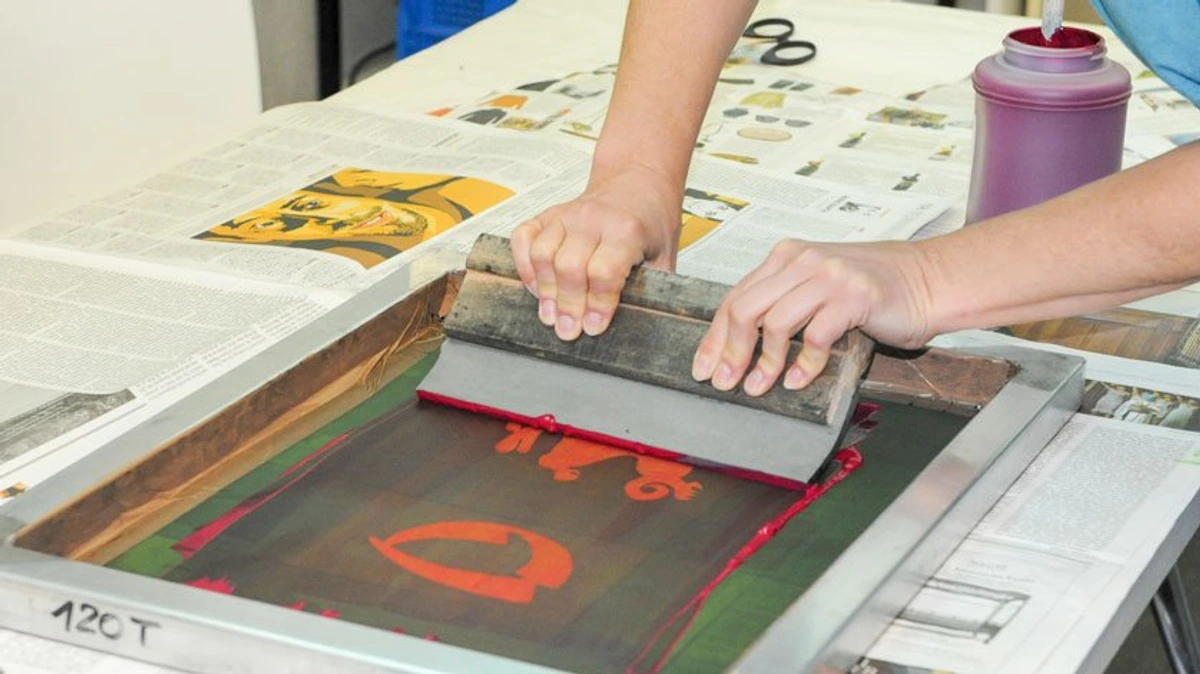
- Condition Check: Beyond the medium, ask about its condition. Especially for older or secondary market pieces, don't be shy! Look for and inquire about any specific flaws. I've seen beautiful pieces with hidden issues that would require costly restoration down the line. Ask about: craquelure (fine cracking, often in oil paint), foxing (brown spots on paper), fading (loss of color, often from light exposure), tears, creases, scratches, abrasions, water damage, mold, or evidence of previous repairs or restorations. A reputable seller should provide a detailed condition report. Minor issues might be acceptable depending on the piece and price, but major ones impact value and longevity.
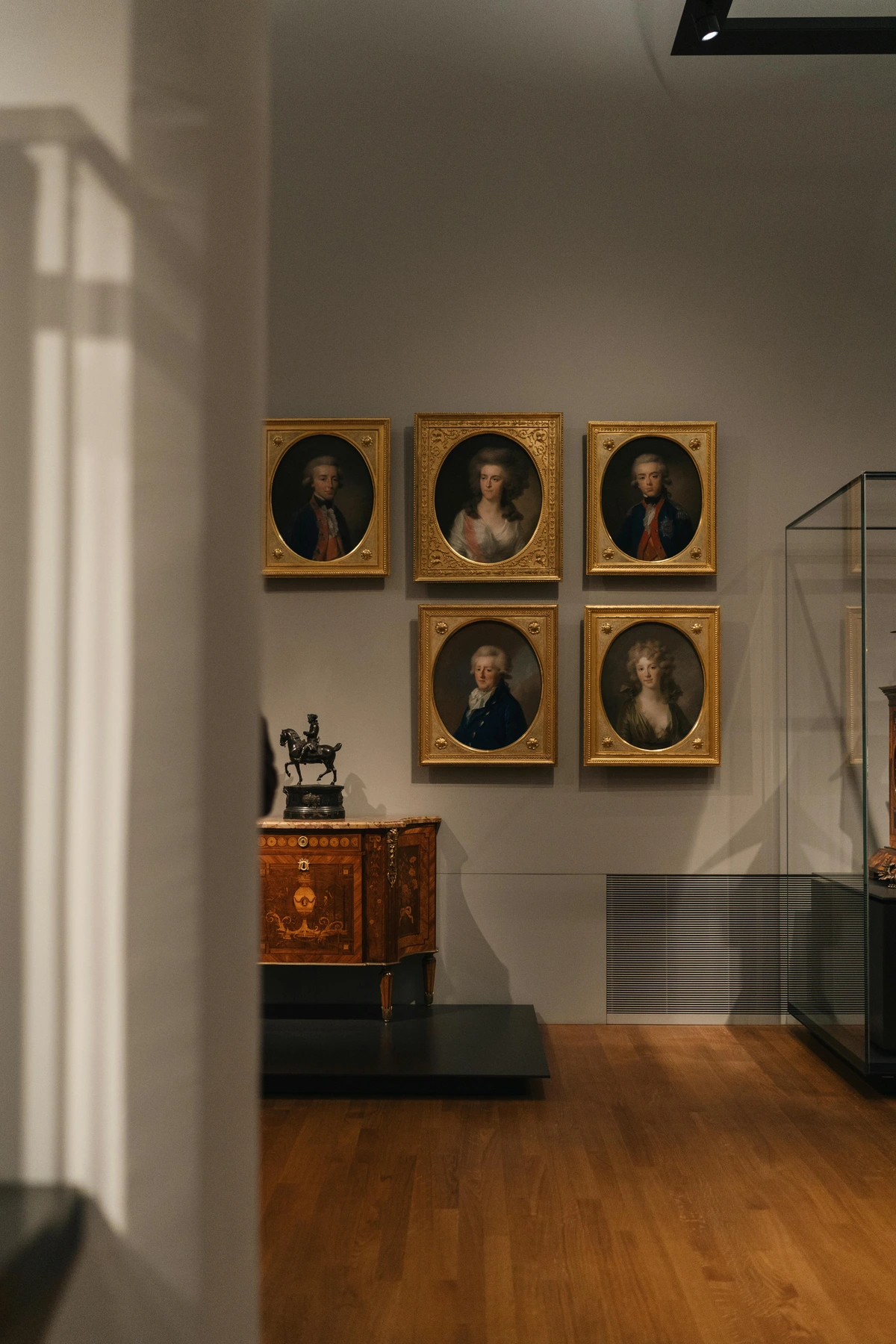
- Edition Details: Crucially for prints and multiples: Always ask "What is the edition size and number?" This tells you how many were made (e.g., "an edition of 50") and which specific one you're getting (e.g., "number 15/50"). Smaller editions are generally more valuable. Also, ask if there are artist's proofs (APs) or other special prints outside the main edition. APs were traditionally kept by the artist, but are sometimes sold and can be more valuable due to their scarcity and direct connection to the artist's process.
- Ask the seller: "Could you tell me more about the medium and support used? Is there a detailed condition report available? Are there any known issues like repairs, fading, or damage? (If a print/multiple): What is the edition size, and which number is this specific piece? Are there any artist's proofs?"
5. Is it Authentic & What's its Provenance?
Authenticity is key. You want to be sure you're buying what you think you're buying! For new works bought directly from the artist or a reputable primary gallery, authenticity is usually straightforward. You'll often receive a Certificate of Authenticity (CoA). However, it's good to know that CoAs aren't all created equal. An artist-issued CoA is generally the gold standard. A gallery-issued CoA is also common and valuable, especially from established galleries. For prints, a publisher-issued CoA might be provided. Be wary of CoAs from unrelated third parties unless they are recognized experts for that specific artist.
For works on the secondary market (resale), provenance (the documented history of ownership) is critical to verify authenticity and establish value. Think of it as the artwork's biography. Ask for any available provenance documentation. This could include:
- Original gallery receipts or invoices
- Auction records (listing in catalogues, sales results)
- Exhibition catalogues where the piece was featured
- Letters from the artist mentioning the work
- Records of previous owners (sometimes anonymized for privacy, but the lineage should be traceable).
A strong provenance trail gives you confidence in what you're buying. (Navigating the Secondary Art Market).
- Get it in Writing: Even with a CoA, always insist on a detailed, written invoice or bill of sale. This document should clearly describe the artwork (artist, title, date, medium, dimensions, edition details if applicable), the price paid, and the date of sale. This is your primary proof of purchase and ownership, and a crucial part of the piece's provenance for the future.
- Ask the seller: "Does this work come with a Certificate of Authenticity? Who issued it? (Especially for secondary market): What provenance documentation is available for this piece? Can I get a detailed written invoice or bill of sale?"
6. What is the Real Cost?
Ah, the price tag. It often feels like just the beginning, doesn't it? I learned this the hard way with my first framed print – the framing cost almost as much as the print itself! Be prepared for additional costs that can significantly inflate the final amount. Always factor in:
- Sales Tax: Varies by location, can be substantial.
- Framing: Custom framing, especially with archival materials (which you should insist on for works on paper or photographs), can cost hundreds or even thousands. Expect maybe 15-30% of the artwork cost, sometimes more, depending on the size and materials. (See my Framing Guide).
- Shipping/Delivery: Especially for large or delicate pieces, or international purchases. Ask about transit insurance – who covers it if the work is damaged en route? Shipping can be surprisingly expensive.
- Insurance: Once it's yours, you'll want to add it to your homeowner's or renter's insurance policy. Get an appraisal if required. This is usually a small annual cost but vital protection against damage or theft.
- Buyer's Premium (Auctions): If buying at auction, this is a hefty percentage (typically 15-30%, sometimes more) added to the winning bid (hammer price). Don't forget it! It's a fee the auction house charges the buyer.
- Potential Future Costs: Consider that some artworks might require professional cleaning or even restoration down the line, especially if they are older or delicate. While not an immediate cost, it's something to be aware of for long-term ownership.
Budgeting accurately prevents nasty surprises. (How Much Does Original Art Actually Cost?).
- Ask the seller: "Could you provide a full cost breakdown, including tax, potential framing, and shipping estimates? (If shipping): Is transit insurance included in the shipping cost? Are there any anticipated future maintenance costs I should be aware of?"
7. How Will I Display & Care For It?
Proper display isn't just about looking good; it's about preservation. If framing is needed, discuss specific framing considerations with the framer or seller. Insist on archival (acid-free) materials for mats and backing boards to prevent yellowing or damage over time. Critically, ask about UV-protective glazing (glass or acrylic). It costs more but is essential to prevent fading from sunlight or even strong indoor light. Think of it as sunscreen for your art! I always recommend it, especially for works on paper or photographs.
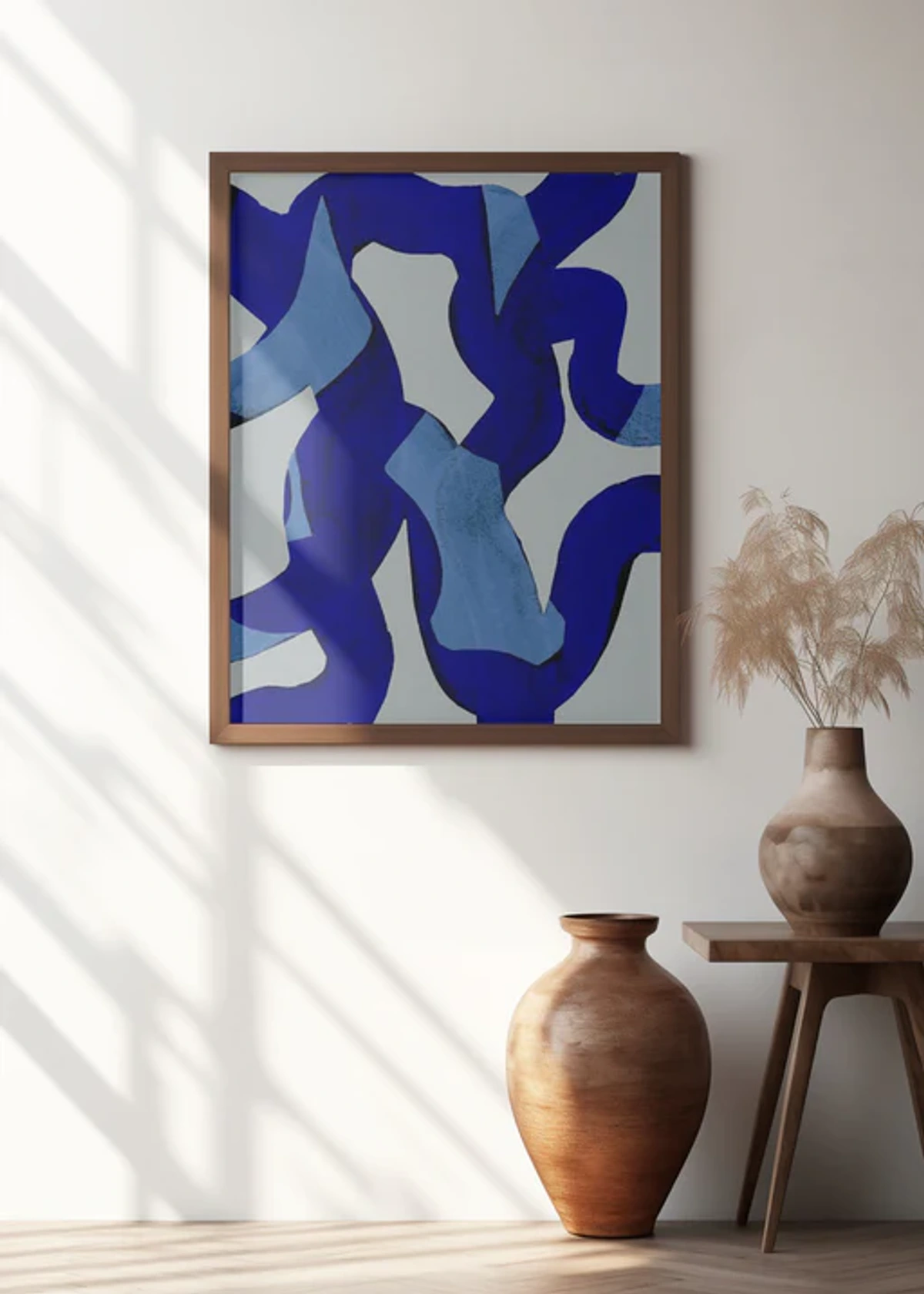
Also consider hanging hardware, ideal lighting conditions (again, avoid direct sun!), and appropriate cleaning methods for the specific medium. Understanding these practicalities ensures you can properly showcase and preserve your investment. (How to Display Different Types of Art in Your Home, Art Care 101).
- Ask the seller: "What are the recommended display conditions for this piece (lighting, humidity)? What kind of framing do you recommend, and do you use archival materials and UV-protective glazing? What are the best ways to clean or maintain this specific medium?"
8. Does It Fit My Style & (Future) Collection Goals?
This loops back to Question 1 a bit, but with a wider lens. Does the piece align with your home's aesthetic and your personal taste (Define Your Style)? If you envision building a collection, does it fit a potential theme or direction? Are you drawn to contemporary or abstract styles? Exploring vibrant pieces like those at the Zen Museum Store might resonate with your taste. It's okay if you don't have a grand collection plan yet, but thinking about it can help guide your choices.
9. Why Am I Buying This Piece?
Clarifying your motivation helps manage expectations and ensure satisfaction. Are you looking purely for decoration? Are you deeply moved by it? Do you want to support a living artist? Are you hoping it might appreciate in value (Art as an Investment)? Understanding your 'why' is crucial.
- A Note on Investment: For most first-time buyers, I strongly believe investment potential should be a secondary consideration at best. Buying art solely as an investment is a complex, high-risk game best left to seasoned collectors and professionals. Buy art because you love it, because it enhances your life, because it makes you think or feel. If it appreciates in value later, consider it a wonderful bonus, not the primary goal. Buying art you don't connect with, just because someone says it's a good investment, is a recipe for a very expensive dust-collector.
10. Am I Buying from a Reputable Source? What's the Policy?
Trust is huge in the art world. Whether it's a brick-and-mortar gallery (Best Galleries), an online platform (Buy Art Online), an auction house, or directly from the artist, do your homework. Look for hallmarks of reputable sellers:
- Transparency: Clear pricing, readily available information about the artist and artwork.
- Condition Reports: Willingness to provide detailed condition reports upon request.
- Clear Return Policy: Especially vital for online purchases or if you haven't seen the work in person. Explicitly ask: "What is your return policy?" Know the timeframe and conditions (e.g., who pays return shipping?). A good seller stands behind their sales.
- Professional Affiliations: Membership in respected dealer associations (like the ADAA - Art Dealers Association of America or similar organizations in other countries) can be a positive sign.
- Good Reviews/Standing: Check online reviews or ask within the art community if possible.
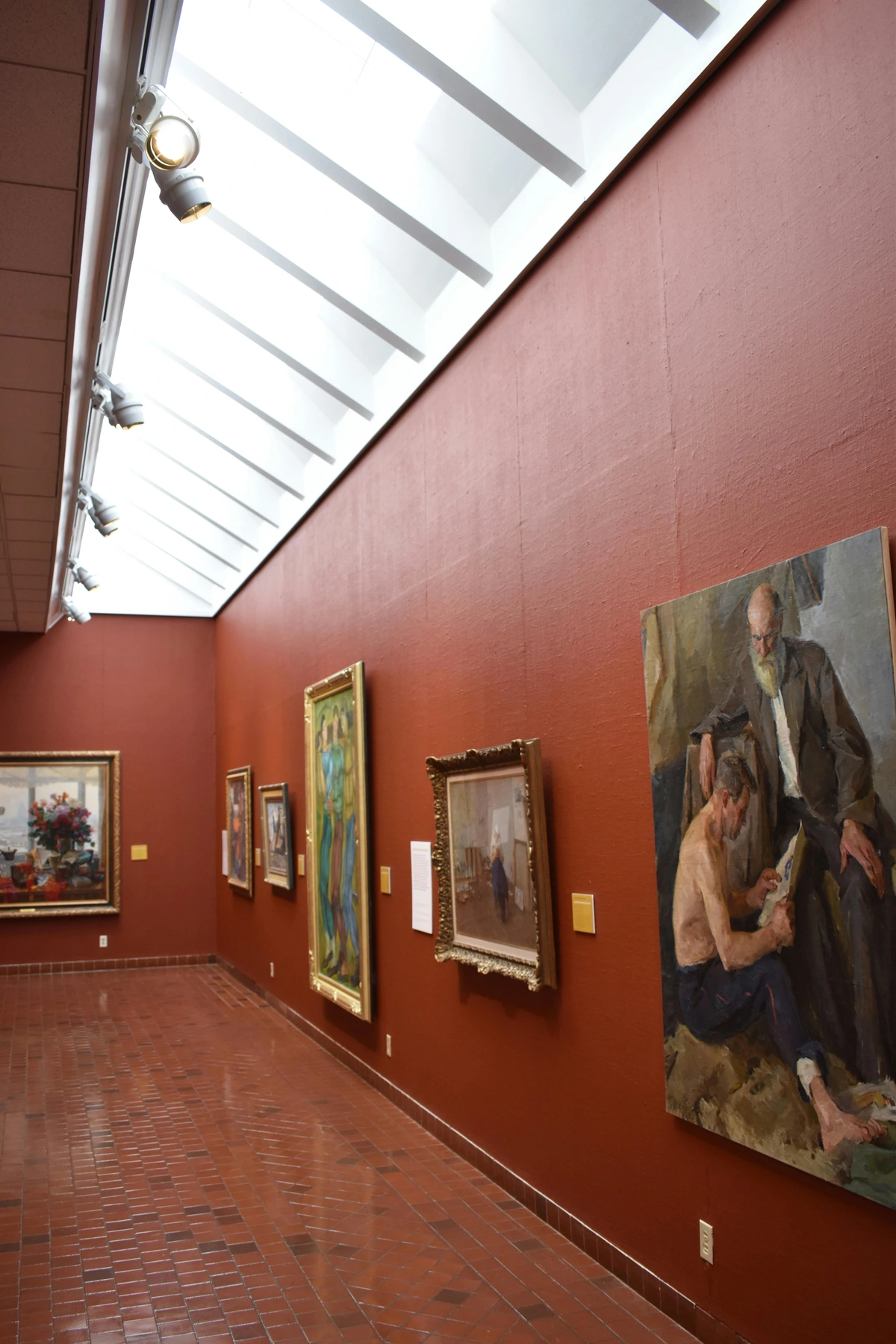
- The Artist's Signature: Where is the signature? Is it dated? Does it look consistent with other examples of the artist's signature? While not foolproof, a signature is part of the artwork's identity and authenticity. A reputable seller should be able to show you examples of the artist's typical signature.
- A quick note on negotiation: Is the price firm? It depends. In many primary market galleries (selling new work by living artists), prices are often fixed, especially for established artists. However, in secondary market galleries or sometimes when buying directly from an artist, there might be some flexibility. It never hurts to politely inquire if the price is firm, but aggressive haggling is generally frowned upon. Be respectful. (Negotiating Art Prices in Galleries, Where to Buy Art).
- Ask the seller: "What is your return policy? Can you show me where the artist signed the piece? Is the listed price firm?"
Conclusion
Buying your first piece of art is a significant and rewarding step. It's an act of bringing beauty, meaning, and a little bit of the world into your personal space. By arming yourself with these essential questions, you move from being a potential buyer to an informed collector. It empowers you to understand what you're acquiring, ensures it fits your life and budget, and ultimately helps you choose a piece you will treasure. Happy collecting!
Ready to explore and find that piece that makes you say "yes!"? Discover unique contemporary art at the Zen Museum Store.
Frequently Asked Questions (FAQ)
Q1: Which of these questions is the MOST important for a first-time buyer? A: While all are important, "Do I truly love it?" (#1) is often considered the most crucial for a first purchase. Building a genuine connection with the art ensures lasting enjoyment, regardless of other factors like potential investment value.
Q2: Do I need provenance documentation for a brand new piece bought directly from the artist? A: Typically, no. For primary market sales, a Certificate of Authenticity and a detailed written invoice/bill of sale from the artist or gallery usually suffice as initial proof of origin and ownership. Provenance becomes more critical for older works or those being resold on the secondary market, tracing its history after the initial sale.
Q3: Is it okay if I just want to buy art because it matches my sofa (decoration)? A: Absolutely! Art serves many purposes. If your primary goal is decoration and the piece brings you joy in your space, that's a perfectly valid reason to buy it. Just be clear about your motivation and ensure the practicalities (size, environment) work.
Q4: How much should I budget for my first art purchase? A: There's no set amount! Start within your comfort zone. You can find wonderful art at various price points, especially prints (giclée, screenprints, etc.) or works by emerging artists. Check my guide on starting an art collection on a budget. Remember to factor in potential framing (could be 15-30% or more of the art price), tax, shipping, and possibly insurance costs.
Q5: What's the main difference between an original painting and a print? A: An original painting is a unique, one-of-a-kind work created directly by the artist's hand (e.g., oil on canvas, acrylic on board). A print is typically created in multiples (an edition) using various techniques (like etching, lithography, screen printing, or digital methods like giclée). Prints can be original works of art in their own right (fine art prints) or reproductions of other works. Always ask about the edition size and whether it's a limited edition for prints. Learn more here: Prints vs. Paintings.
Q6: What specific condition issues should I look out for? A: Be vigilant! Ask about or look for craquelure (fine cracks in paint), foxing (brown spots on paper), fading (color loss), tears, creases, scratches, abrasions, water damage, mold, or any signs of past restorations or repairs (which should be disclosed). A reputable seller will provide a detailed condition report.
Q7: What's the Buyer's Premium at auction? A: It's a fee charged by the auction house to the buyer, calculated as a percentage of the winning bid (hammer price). It's added on top of the bid price and can range significantly, often 15-30% or even higher depending on the price point and auction house. Always factor this into your maximum bid! It's part of the real cost.
Q8: Why is investment potential usually secondary for first-time buyers? A: The art market is complex and volatile. Predicting which artists or pieces will appreciate significantly is difficult, even for experts. For beginners, focusing on investment can distract from the primary joy of art ownership – the personal connection and aesthetic pleasure. Buying what you love ensures you gain value (in enjoyment) regardless of market fluctuations. My guide on Art as an Investment goes into more detail.




